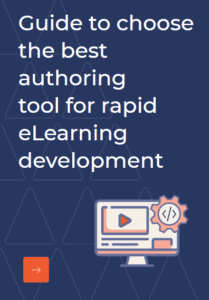Is there any learning concept that just stuck to you just because of the way it was taught? I was lucky enough to be a part of a learning generation that had videos, simulations and interactives as a part of learning. I still remember clearly the concepts of chemical bonding and rusting learnt through a 2D simulation.
Simulations though initially more prevalent in Aviation, Defense and K12 education has now gained prevalence in the corporate training sectors too. Its key benefit is that real situation-based learning can be embarked on without causing any actual distress or physical damage.
Say for instance, if an employee were to learn about the assembly of a new instrument directly there are chances that the process would turn out wrong and end up damaging some vital components. Such situations can easily be avoided using one-shot simulations providing the learners ample opportunity to learn while doing. This also opens the possibility of experimenting depending on how well the simulation is designed.
With more and more learners preferring to learn on their own, through trial and error we see the scope for simulation-based learning increasing day-by-day. Based on our work with several organizations and our close analysis of the recent market trends, here are 4 key trends in eLearning Simulation.
1. Combination of Interactive Videos and Simulations
Videos and Simulations have always gone hand in hand and now with the arrival of interactive videos even more so. The possibilities are vast. Interspersing videos to fill the gaps in the simulations or using simulation as a part of the interactive video experience can both be great ways to transition eLearning to the next level. Choose a Different Ending is a great example of Video used to deliver a branching scenario.
2. Combination of AR and VR in Simulation
Though still at an experimental level, it is something that can greatly impact the learning space. Considering the fact that VR in itself is a kind of simulation, using the aspects of AR to link it with real-time actions can take the whole idea of simulations to a different dimension.
3. Learning Analysis Using Simulations
What better way to analyze learning than a simulation. We often view training from an assessment point of view, what the learners have learnt is something we wish to analyze even before the training actually begins. So, why shouldn’t we try to recreate the scenarios where the learners need to put into practice what they have learnt and present it in form of a simulation to get a clear idea about how well the learners understand the particular topic. Using simulations as assessment tools will definitely become a must-have in the years to come.
4. Gamified Simulations
Recreating microworlds where learners can interact with the elements in it and learn from their experiences, is a commonly used form of simulation-based learning. With the coming in of 3D technology, it has now opened up greater possibilities. Clubbing this with game elements like score-boards or experience points and levels can make learning more engaging. It can not only create an explorative space for the learners, but also keep them hooked because of the various reward systems used within it.
The best part about Simulations is that, it can be used to recreate scenarios that can be too tough to explain otherwise. FMCG companies, healthcare sector etc. have been prevalently utilizing its capacities to deliver learning.
Organizations value the fact that learning using simulations is learner-driven and more engaging. However, the key lies in how well the simulation has been designed and that in turn depends on data gathering, analysis and instructional design among various other aspects.
If you are yet to use simulations, its only advisable that you get started now. If you have any questions on how to use simulations as a part of your organizations learning strategy, then let’s have a one-on-one to understand your requirements. Connect with us at info@www.knowzies.com.



